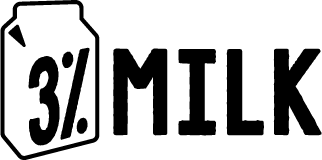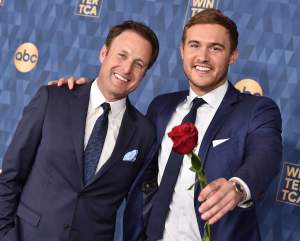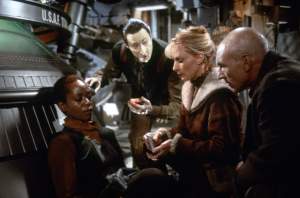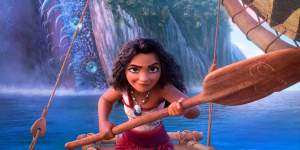10. Starry

Smith Collection/Gado/Getty Images
Starry is the newest name on the block in the world of nationally advertised and widely available lemon-lime soft drinks. Or, that’s what PepsiCo would have you believe. Despite a massive ad campaign and slight reformulation, Starry is still the same Sierra Mist that was introduced in 1999 and failed to catch on with consumers.
The soda isn’t necessarily bad, but it is fighting for space in an already crowded market. The soda companies seem to have accepted that only two “colas” can compete in the market, but the lemon-lime secretary continues to be an exercise in crab mentality.
9. 7 Up

darios44/istock
Once upon a time, 7 Up was the third most popular soft drink in the United States. A caffeine-free lemon-lime refreshment, this “uncola” has recently fallen behind other brands like Sprite and Mountain Dew in the citrus corner of the soda universe. Long gone are the days of “Make 7 Up Yours” or playing the latest video game featuring Cool Spot on the Sega Genesis or Game Boy.
The big problem with 7 Up over the years is it seems like they are always playing with the formula. For better or worse, it doesn’t taste like it used to.
Cherry 7 Up is still pretty dope, though.
8. Fanta

darios44/istock
Remember that jingle from the mid-2000s? “Wanna Fanta, don’t you wanna?” Very catchy.
Fanta was originally developed in Germany in the early 1940s, as an American Trade embargo against the Nazi government made it difficult to get the ingredients to produce Coca-Cola.
Today in the United States, Fanta is probably best known for their fluorescent fruit soda offerings, with Orange and Grape among the most popular. The soda is overly sweet and semi-artificial tasting, though it does have its fans.
Did you know that the American Orange Fanta is the only version that isn’t made with real orange juice? Don’t you wanna?
7. A&W

SKrow/istock
The name A&W comes from a partnership in the early 1920s between Roy Allen and Frank Wright, when the two men grew Allen’s root beer stand business into a franchised restaurant. By the 1970s, A&W had made their root beer available at retail nationally, and to this day it remains the number one root beer brand head of Barq’s and Mug. Perhaps it’s the familiar flavor, or the welcoming balance of bubbles and bite — maybe it’s just that the Great Root Bear is an adorably charming mascot — but when you’re looking for a sassafras refreshment, A&W just hits the spot.
6. Pepsi

JHVEPhoto/istock
Depending on who you ask, placing Pepsi this low on the list is straight-up disrespectful.
In certain situations, Pepsi can hit the spot. It tastes particularly good from a fountain. Out of a can or bottle, though, it is quite mid. Compared to coke, it’s overly sweet, yet quite mild in its flavor. Especially when served ice cold, Pepsi can’t hold a candle to the worldwide market leader in cola.
Their logo game has also fallen off significantly. They peaked in the 1980s on that front. Still, Pepsi also gave us Pepsiman, one of the strangest PlayStation games ever made, so it isn’t all bad.
5. Mountain Dew

darios44/istock
Mountain Dew (or Mtn Dew if you’re one of the cool kids) is a strange soda to pin down. Unlike the lemon-lime 7 Up or Sprite, classic Mountain Dew is vaguely “citrus” flavored, with a color that looks as natural as the ooze from TGRI that created the Teenage Mutant Ninja Turtles.
All credit to Mountain Dew’s fantastic advertising and positioning teams — leaning into their perception as gamer fuel for all-night Call Of Duty sessions and promoting new borderline-radioactive flavors like Code Red and Baja Blast, they’ve expanded from a niche soft drink into one of the most visible in the market.
4. Canada Dry

anthonyrosenberg/istock
Canada Dry Ginger Ale is the ultimate soft drink utility player. You might order one once or twice a year, but when called upon it always hits the spot. Some people swear by the ginger ale to settle a sour stomach or help with acid reflux. Others live for whiskey and ginger in a highball glass.
But where Canada Dry truly reigns supreme is at 35,000 feet. There’s something about the dry air and the cabin pressure that elevates the soft drink from an also-ran bar mixer into the nectar of the gods. Crisp, sharp, bubbly perfection in a can.
3. Sprite

darios44/istock
Sprite began its life in the 1950s as a Fanta product and was introduced into the United States market in the early 1960s to compete with 7 Up. Today, sprite sits atop the world of Lemon-lime soft drinks. Sprite comes in a variety of enticing flavors, with their cherry and cranberry variations of particular note.
The ultimate version of Sprite famously comes from a very specific place. If they ever manage to bottle or put it in a can, they may completely take over the entire soda game. We are of course talking about Sprite from a McDonald’s fountain. Colder, bubblier, “spicier” — it just hits different.
2. Dr. Pepper

Gilberto_Mesquita/istock
Invented in Texas by a pharmacist in the late 1800s, there is speculation on the origins of both the name and the flavor (like Coca-Cola, Dr. Pepper’s flavor formula is a highly guarded trade secret). In the 1960s the FDA declared that the soft drink was neither a cola nor a root beer, but instead in a category of its own (a pepper soda).
The flavor is adjacent to a cherry coke, but that’s not right either.
Whatever it is, it’s delicious.
Dr. Pepper has expanded nationally in the last couple of decades and added to their slate of Dr. Pepper varieties. It remains one of the most unique soft drinks in the world.
1. Coca-Cola

AlizadaStudios/iStock
There’s a reason it’s the king of all colas. Coca-Cola began life in the late 1800s as a medicinal beverage, but within a few decades became as much a part of classic Americana as automobiles or apple pie.
The flavor is unmistakable, so much so that its nearest competitor Pepsi often positions itself as an alternative to, not as a brand that stands on its own.
Diet Coke has just as many loyal fans, to the point that when they developed a new zero-sugar variation of Coke they had to name it Coke Zero lest the Diet fans storm the Atlanta headquarters.







